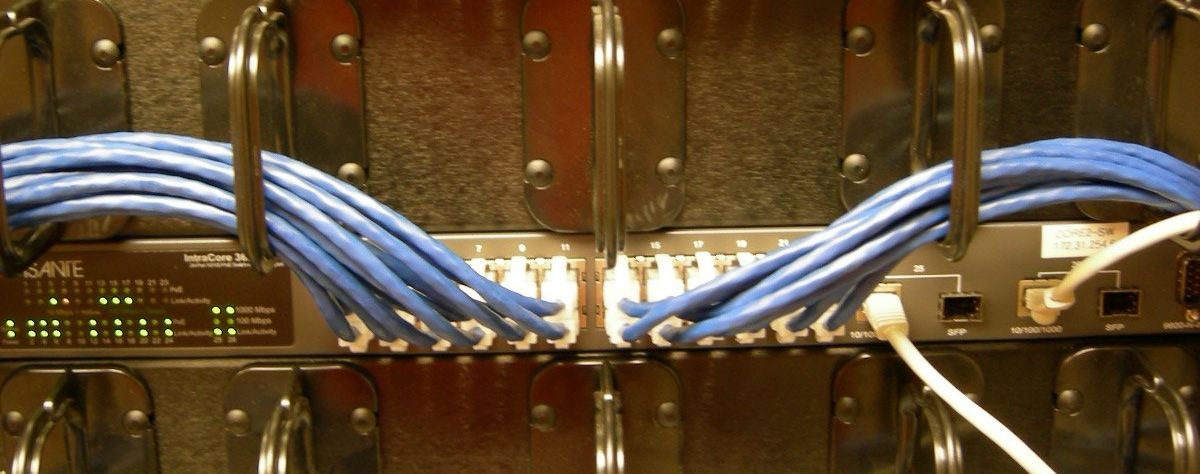Transit vs. Transport: Explained and Compared
Comprehensive Comparison of Transport and IP Transit

Choosing the right connectivity solution is crucial for businesses aiming to optimize their network performance. IP transit and transport services serve distinct purposes, each playing a vital role in facilitating internet traffic. Capcon Networks often leverages these solutions together to get traffic where it needs to go while lowering latency and costs. This article delves into the differences between IP transit and transport, helping organizations make informed decisions about their network needs.
What is IP Transit?
IP transit refers to the service that allows internet traffic to flow from one network to another. It is the backbone of internet connectivity, providing a pathway for data packets to travel across various networks to reach their destination. Here are some key characteristics of IP transit:
• Connectivity to the Internet Backbone: IP transit services connect networks to major internet backbones, ensuring global reach and accessibility. This means that businesses can communicate with customers and partners worldwide without significant barriers.
• Routing Capabilities: Through BGP (Border Gateway Protocol), IP transit facilitates efficient routing of data, ensuring that packets take the best available paths across multiple networks. This protocol helps optimize network performance by choosing routes based on real-time conditions, reducing latency and improving overall user experience.
• Scalability: As business needs grow, IP transit solutions can scale seamlessly, accommodating increased bandwidth and traffic without significant infrastructure changes. This scalability is essential for companies experiencing rapid growth or those anticipating future expansions.
• Traffic Management: IP transit allows organizations to manage their traffic effectively, implementing policies that prioritize certain types of data. This capability is particularly important for businesses that rely on real-time applications, such as VoIP and video conferencing.
• Access to Diverse Peering Arrangements: A robust IP transit service offers access to multiple peering arrangements, enhancing redundancy and reliability. This feature is crucial in ensuring that organizations can maintain consistent connectivity even during network disruptions.
What is Transport?
Transport services focus on the delivery of data over a specific network infrastructure, often connecting local networks to the wider internet. This service is essential for businesses requiring reliable internal communication and interconnectivity. Key features of transport services include:
• Layer 2 or Layer 3 Services: Transport can operate at various OSI model layers, providing flexibility in how data is managed and transmitted. Layer 2 transport services involve data link layer operations, while Layer 3 services manage data at the network layer, enabling more complex routing and addressing schemes.
• Dedicated Bandwidth: Transport services often offer dedicated bandwidth, ensuring consistent performance and reliability for data transfers. This dedicated capacity is critical for organizations that cannot afford latency or downtime, especially for applications that demand real-time data transmission.
• Point-to-Point Connectivity: Many transport solutions facilitate direct connections between specific locations, allowing for secure and efficient data transfer. This point-to-point capability is particularly beneficial for businesses needing reliable connections between offices, data centers, or branch locations.
• Enhanced Security Features: Transport services often include additional security measures, such as encryption and dedicated VPN connections, to protect sensitive data during transmission. This aspect is vital for industries that handle confidential information, such as finance and healthcare.
• Network Optimization: With a focus on internal connectivity, transport services can optimize data flow within a company's infrastructure. This optimization ensures that internal processes run smoothly and efficiently, reducing bottlenecks and enhancing productivity.
Key Differences Between IP Transit and Transport
Understanding the fundamental differences between IP transit and transport services is essential for businesses evaluating their connectivity options.
1. Purpose and Functionality
IP transit focuses on connecting networks to the global internet, providing routing and bandwidth necessary for comprehensive internet access. In contrast, transport services are primarily concerned with the internal transmission of data within a network or between specific locations. The fundamental purpose drives the choice of service based on organizational needs.
2. Scalability and Flexibility
While both services offer scalability, IP transit tends to provide a more flexible solution for rapidly growing businesses. IP transit solutions can easily adapt to fluctuating traffic demands, whereas transport services might require more substantial infrastructure changes to accommodate growth. This flexibility is crucial for businesses that operate in dynamic environments or those experiencing seasonal traffic variations.
3. Cost Considerations
Typically, IP transit services can be more cost-effective for businesses needing extensive internet connectivity due to their pricing models based on bandwidth usage. Transport services, while offering reliability, may involve higher costs for dedicated lines or point-to-point connections. Analyzing total cost of ownership is vital for organizations looking to balance quality and budget.
4. Quality of Service (QoS)
Transport services often guarantee a higher quality of service, with dedicated bandwidth ensuring consistent performance. IP transit, while reliable, can be subject to varying levels of congestion depending on the routing and peering policies of transit providers. For businesses that rely on real-time applications, QoS becomes a significant factor in the decision-making process.
5. Latency and Performance
Latency is a critical factor in network performance, particularly for applications that require real-time data transfer. Transport services generally offer lower latency due to their dedicated connections, while IP transit can experience higher latency due to the potential for congestion across multiple networks. Organizations must assess their specific latency requirements when choosing between these services.
When to Choose IP Transit or Transport Services
Deciding between IP transit and transport depends on the specific needs of your organization. Here are some scenarios for each service:
When to Choose IP Transit
• Global Reach: Businesses requiring extensive internet access to connect with customers and partners worldwide benefit from IP transit, which provides comprehensive routing across the internet.
• High Traffic Volume: Organizations expecting rapid growth in internet traffic and needing scalable solutions will find IP transit advantageous, as it can handle increased demands without major disruptions.
• Diverse Routing Needs: Companies that benefit from connecting to multiple internet backbones and leveraging efficient routing should opt for IP transit to ensure redundancy and reliability.
• Cost Efficiency: For organizations looking to optimize their bandwidth costs while maintaining a robust online presence, IP transit services often provide a more economical solution.
As mentioned earlier, using transport and transit together can be a great strategy for keeping latency down and lowering operational expenses. Take for example and rural broadband provider. They are often better suited getting a transport circuit to a regional data center where they peer directly with content providers, and pick up IP transit for the traffic that can't be peered.
See our article below on IP transit vs. peering:
IP Transit vs Peering: Diving Deep!
When to Choose Transport
• Internal Communication: Organizations focused on secure, high-speed internal data transfers between locations will find transport services essential for facilitating seamless communication.
• Consistent Performance: Businesses needing guaranteed bandwidth for critical applications or services should consider transport solutions, as they offer the reliability required for smooth operations.
• Specific Location Connections: Companies that require dedicated point-to-point connections for sensitive data transfers will benefit from transport services, ensuring secure and efficient transmission.
• Regulatory Compliance: Industries with strict data compliance requirements may find that transport services offer the necessary security measures to meet their obligations.
Understanding the differences between IP transit and transport services is essential for businesses aiming to optimize their connectivity solutions. By assessing your organization's specific needs and considering the distinct advantages of each service, you can make informed decisions that enhance your network performance and reliability.
IP transit provides global connectivity, scalability, and cost efficiency, making it ideal for businesses with extensive internet needs. On the other hand, transport services excel in delivering consistent performance, dedicated bandwidth, and secure internal communication, making them suitable for organizations that prioritize reliability and data security.
For businesses looking to navigate these options, Capcon Networks is here to take a deep dive into your network traffic and help you decide on the best connectivity solution for you. We not only focus on performance/reliability, but we also look very carefully at cost and minimize your cost/Mb as much as possible.











